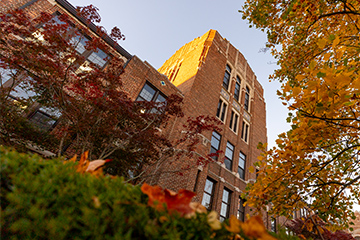Partnering with NASA, gaining field experience
Meteorology students, faculty launch data-gathering balloons
An exciting new partnership provided federal researchers with important weather data and Central Michigan University meteorology students with valuable hands-on experience.
Scientists with the National Aeronautics and Space Administration had an airplane, but also needed weather balloons, said Jason Keeler, assistant professor of meteorology. CMU’s meteorology program provided three of them.
Students and faculty held three staggered weather balloon launches on Feb. 9 in conjunction with launches at two National Weather Service sites, one in Gaylord and one in Green Bay, Wisconsin.

As the balloons – with data-collecting radiosondes dangling beneath them – rose to between 20-25 kilometers, they transmitted information about temperature, wind speed and direction, humidity and air pressure back to the CMU team.
Using this data, NASA’s researchers hope to develop a better understanding of the internal structure of snowstorms, which they hope will result in more accurate forecasting.
It gave the students involved hands-on experience as working scientists.
“Getting involved with NASA’s research was such an amazing opportunity and knowing that I and everyone else involved contributed to [NASA’s] research is such an indescribably exciting feeling,” said Tobias Leonard, a sophomore from Westlake, Ohio. “This was also a great opportunity to learn about what field work for research is really like, even if it was just in the backyard of our campus.”
NASA will pair CMU’s data with information its aircraft collected by flying a path through northern Michigan across Lake Michigan.
Keeler said that his students got a first glimpse at the radiosonde data before they sent it to NASA. He combined it with data gathered with other instruments on CMU’s campus, including a radar capable of measuring how fast precipitation falls.
Rain falls quite a bit faster than snow, Keeler said, and air becomes cooler the higher you go into the atmosphere. So, while the radiosonde data told the team when it passed the altitude at which falling snowflakes melt, the radar pinpointed where this happened by recording when precipitation started falling faster.
Combining the two datasets provided CMU’s meteorology students a more in-depth picture of what the storm looked like on the inside, Keeler said.
NASA’s researchers expect to publish their findings in an academic journal, which meant CMU’s students weren’t just students gathering data on a class assignment. They were scientists contributing knowledge to their field of study.
“Student success is impacted by their ability to see themselves as scientists,” Keeler said. “And so we’re always looking for opportunities to help them see themselves in this way.”





